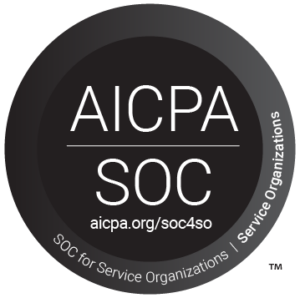Cybersecurity:
The Importance of Multi-Factor Authentication (MFA)
Multi-factor authentication (MFA) is a security process that requires users to provide two or more pieces of evidence to verify their identity before being granted access to a system or application. This extra layer of security helps to protect against unauthorized access, even if a hacker has stolen a user’s password.
There are many different MFA factors that can be used, such as:
- Something you know, such as a password or PIN
- Something you have, such as a security token or smartphone
- Something you are, such as a fingerprint or facial scan
By combining two or more of these factors, MFA makes it much more difficult for hackers to gain unauthorized access to systems and applications.
According to the CISA (Cybersecurity & Infrastructure Security Agency), “Multifactor authentication is a layered approach to securing data and applications where a system requires a user to present a combination of two or more credentials to verify a user’s identity for login. MFA increases security because even if one credential becomes compromised, unauthorized users will be unable to meet the second authentication requirement and will not be able to access the targeted physical space, computing device, network, or database.”
Why is MFA Important?
MFA is important because it can help to protect against a variety of cyberattacks, including:
Phishing attacks: Phishing attacks are one of the most common ways that hackers steal passwords. By requiring MFA, organizations can make it more difficult for hackers to gain access to systems and applications even if they have a user’s password.
Brute force attacks: Brute force attacks involve hackers trying to guess a user’s password by repeatedly entering different combinations of characters. MFA can help to protect against brute force attacks by requiring users to provide a second factor of authentication, such as a security token or smartphone, in addition to their password.
Session hijacking: Session hijacking occurs when a hacker takes over a user’s session after they have logged into a system or application. MFA can help to protect against session hijacking by requiring users to provide a second factor of authentication every time they log in from a new device or location.
Why is MFA a Key Component of Cybersecurity?
MFA is a key component of cybersecurity because it can help to protect against a wide range of cyberattacks. By requiring users to provide two or more pieces of evidence to verify their identity, MFA makes it much more difficult for hackers to gain unauthorized access to systems and applications.
In addition, MFA is a relatively easy and inexpensive security measure to implement. Most organizations can easily enable MFA for their systems and applications with little or no disruption to their users.
How to Enable MFA
There are many different ways to enable MFA. The specific method that you choose will depend on the systems and applications that you want to protect. However, most MFA solutions involve the following steps:
- Choose the MFA factors that you want to use.
- Register your users for MFA.
- Configure your systems and applications to require MFA.
Once you have enabled MFA, you should periodically test it to make sure that it is working properly. You should also educate your users about MFA so that they understand why it is important and how to use it.
MFA is an important security measure that can help to protect your organization from a variety of cyberattacks. By enabling MFA, you can make it much more difficult for hackers to gain unauthorized access to your systems and applications.
If you are an IT leader, we encourage you to consider enabling MFA for your organization. MFA is a relatively easy and inexpensive security measure that can make a big difference in protecting your organization’s data and systems.







